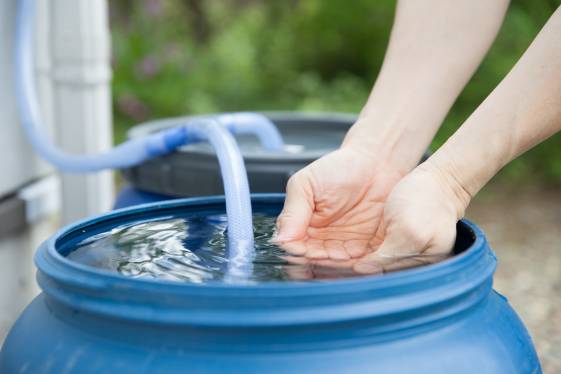How To Build An Off Grid Water System
An off grid water system is a water storage tank or containers, pipes, valves, pumps and an on-site tap. The main advantage of using an off grid water system is that you can tap into it whenever you need to. This is because the storage tank will always have enough water for your needs. This allows you to have continuous access to clean drinking water at all times. When you are using an off grid water system, you can rely on the storage tank to have a constant supply of water for at least one month. This is especially important if you are living in a remote area where there is no running water. The system will be able to provide you with enough water for your daily needs, as well as for your emergency survival kit.
Why Build an Off Grid Water System
There are several reasons why people build an off grid water system. The most common reason is that they want to live off the grid. Off grid living is popular because it allows you to live without depending on the electrical grid for your electricity needs. If you are living off the grid, you will not have to pay for electricity or other utility bills. Instead, you will be able to harvest energy from the sun and your solar panels.
An off grid water system can also be used as a part of an emergency preparedness plan. It is important that you build an off grid water system because it can provide water in an emergency situation where there is no running water or electricity. As mentioned above, if you are living in a remote area, it is essential that you have a water storage system. This is because you will have enough water for your needs, and it will be clean.
Benefits of using an off grid water system:
- The water stored in the storage tank is always clean and fresh.
- It will be possible to have access to clean drinking water whenever you need it.
- You will be able to save a lot of money on your monthly water bill.
- The tank can be used as a water storage tank for emergencies.
How Do You Filter Water Off the Grid?
There are several ways to filter water from the grid. The most common method is to use a water purification system. These systems are designed to remove impurities from the water such as bacteria, viruses, and parasites. You can also buy an inexpensive water filter which is capable of removing the bad stuff and filtering out good bacteria and minerals.
Another way to filter water is by using a simple Brita water filter pitcher. This is a very effective method of filtering impurities from the water. The Brita water filter pitcher has a filter that is made from the same materials as your typical coffee filter. You can also buy an inexpensive reverse osmosis water filter. This type of filter is capable of removing the bad stuff and filtering out good bacteria and minerals. The bad stuff can also be removed using a de-ionizing water filter. This type of filter uses an advanced electrolysis process to separate salt from the water.
The main difference between an on grid water system and an off grid water system is the storage tank. If you are going to use an off grid water system, you should make sure that the storage tank is big enough to hold enough water for your needs.
What Materials are Needed to Build an Off Grid Water System?
The first thing that you need to do is to determine what materials you will need to build an off grid water system. There are a number of different materials that you can use, and the type of material that you choose will depend on the purpose of your system. For example, if you want to build an off grid water system for drinking water, then you should choose a plastic tank or storage container. You can also use a metal tank if you want to store larger amounts of water.
The next thing that you need to do is to decide where you will build your off grid water system. You can build your system in a garage, a basement, or a storage shed. If you are going to build an off grid water system in a shed, then it is important that you use strong and durable materials such as metal. This is because you will be storing water in a place that is exposed to the elements. If you use strong and durable materials, then you will be able to store your water for a long time. You can also choose to build your system using galvanized steel or iron piping. This is because these materials are durable and will not rust over time.
How To Build an Off Grid Water System
Now, let’s take a look at the 3 methods for building an off grid water system.
Dig a Well
This is the most popular method for building an off grid water system. However, digging a well can be very expensive, especially if you are planning to dig it deep underground. Also, if you are planning to dig a well, it is recommended that you consult a professional so that you can have a well dug. It is also important to know the laws of your area so that you do not get into trouble.
Also, it is important to note that you will need to have an electricity connection and a source of water for the well to be completed. This means that you will need to dig a hole and put a pipeline inside the hole so that you can connect the hole to the water source. If you are not able to do this, then you will need to find another way of building an off grid water system.
Install a Rainwater Harvesting System
This is another method for building an off grid water system. This is because rainwater harvesting systems are easy to install and are very cost effective. This is because you will only need to invest in a few components for this type of system. You will also need to invest in a pump, which will be able to help you lift the water from the storage tank to your tap.
The most important thing about installing a rainwater harvesting system is that you will need to have a steady supply of water. This means that you will need to install the system in an area where there is plenty of rainfall, or you can install it in an area where there is heavy flooding. This means that the system will be able to collect water for at least one month without any problems. Also, it is important to have a pipe from your tap to the storage tank for this type of system.
You can also consider using other types of water storage systems such as ponds and cisterns for your off grid water system. However, if you are planning on installing a pond or cistern, then it is recommended that you consult a professional so that they can advise you on how best to do this for your situation.
Use a Water Purification System
If you are not able to find a way of installing a rainwater harvesting system, then you can consider using a water purification system. A purification system is a type of water storage system that uses chemical or biological agents to purify the water before it is stored. You can use a purification system to store your water for a longer period of time. You can also use a purification system to help in treating water that has been contaminated with chemicals and other toxins.
There are many different types of water purification systems that you can use for your off grid water system. The most popular type of purification system is the reverse osmosis system. The reverse osmosis system is a type of purification system that uses a membrane to separate the water from the impurities. This means that you will need to have a water source and a membrane for this type of system.
Another option to consider is a carbon filter system. This is a type of purification system that uses carbon to remove impurities from the water. Carbon filters are able to remove chlorine, iron, and organic compounds from the water. It works by using a chemical process to break down the impurities. The process involves the use of electricity, chemicals and filters.
Why Rainwater Harvesting Over Well Water for Off-Grid Water Supply?
One of the major advantages of an off grid water system is that it does not require you to buy expensive well water. Well water can be very expensive, especially if you are not located in a rural area. Well water can also be contaminated by the chemical pollution in the ground. You will need to use well water for washing, cooking and drinking purposes. However, when you are harvesting rainwater, you will be able to avoid the need to purchase expensive well water. You can collect rainwater in any type of container, such as a barrel, bin or tub. The rainwater can be stored in a water storage tank and used for your daily needs. The water will not be contaminated with chemicals if you are using a purifier or filter.
How to Live Off the Grid with Rainwater Harvesting
The process of collecting rainwater is simple, but it requires a lot of effort. This is because you will need to install a lot of components in order for the system to work. You will also need to have the right knowledge about how to install these components.
Rainwater harvesting process:
Step 1: Install a Rainwater Catchment System
The first step is to install a rainwater catchment system. This is the main component of the off grid water system. You will need to install a rainwater catchment system on your roof or any other area that is able to collect rainwater. The most important thing about this component is that it should be designed and constructed properly. This is because the installation of the catchment system will be the most crucial part of the whole process.
Step 2: Install a Water Storage Tank
The next step is to install a water storage tank. The size of the tank will depend on the amount of water that you need. The bigger the tank, the more water you will be able to store. The tank should be constructed from a durable material such as stainless steel or aluminum. This is because it will be able to withstand all kinds of weather conditions. You will also need to have a rainwater harvesting system installed in the tank. This is because the tank will have a pipe that connects it to the rainwater catchment system.
Step 3: Install a Rainwater Harvesting System
The third step is to install a rainwater harvesting system. This is the system that will allow you to collect water from the roof or any other area that is able to collect rainwater. You will need to have a water storage tank and a rainwater harvesting system installed in order for the whole process to work. The best thing about this system is that it will allow you to have continuous access to clean drinking water at all times.
Step 4: Install a Water Purification System
The next step is to install a water purification system. This is the component that will allow you to have clean drinking water at all times. The water purification system should be able to filter out any impurities from the water. You will also need to have a filtration system installed in the water storage tank. This is because the water storage tank will have a pipe that connects it to the filtration system.
Step 5: Install a Pump
The next step is to install a pump. This is the component that will allow you to transfer water from the storage tank to your tap. After the pump is installed, you will need to install a valve so that you can easily switch the water from the storage tank to your tap.
Step 6: Install a Hose and Faucet
The next step is to install a hose and faucet. This is the component that will allow you to connect the water system to your tap. You will need to have a hose and faucet installed in order for the whole process to work. The hose should be long enough so that you can easily fill up your containers with water.
Step 7: Install a Tap
The last step is to install a tap. The tap should be installed in an area where there are no pipes and where it is easily accessible. You will also need to have some plumbing tools in order for the tap installation process to be easy and hassle-free. After this, you can use your new off grid water system for all of your daily needs such as drinking, cooking, washing and bathing.







